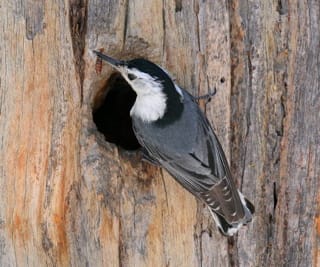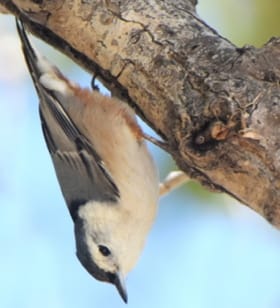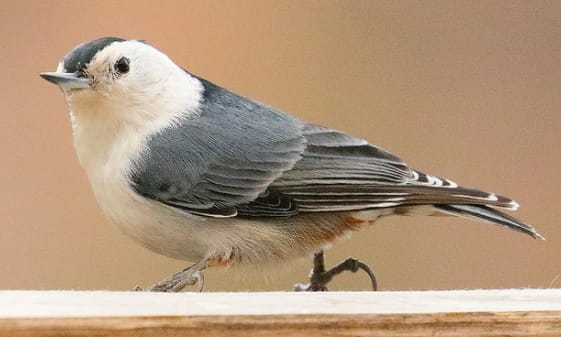Initially this guide displays common birds of all types that are flying right now in our area. Use the selectors below to view rare birds, view birds flying any time, restrict the output to a certain shape of bird, or search by name.
New Mexico is on the western edge of the Central Flyway which is one of the major migration pathways between north and south for birds traveling between breeding and wintering grounds along the Rocky Mountains. This has resulted in the state having an incredible diversity of birds with over 550 different species reported. A little more than half of this number are sighted annually on the Pajarito Plateau. Some of these birds are full-time residents, some migrate here for a few weeks or months, and other are only seen briefly as they pass through the region.
This guide features many of the birds known to frequent Los Alamos county by when they are likely to be seen in the area. You can get additional information on local birds by joining PEEC Birders or going to the eBird website. eBird also includes lists of rare bird sightings and birding hot spots.
Bird References
Birdweb
Cornell Lab of Ornithology
eBird
eNature
Institute for Bird Populations
National Audubon Society
New Mexico Ornithology Society
What Bird
xeno-canto
Subject Area Experts (all guides)
Steve Cary (butterflies)
Beth Cortright (insects)
Terry Foxx (invasive plants)
Leslie Hansen (mammals)
Richard Hansen (fish, mammals)
Dorothy Hoard (butterflies, trees)
Chick Keller (flowers, herbarium)
Shari Kelley (geology)
Kirt Kempter (geology)
Garth Tietjen (reptiles)
David Yeamans (birds)
Web Development and Content Management
Pat Bacha
Jennifer Macke
Graham Mark
Akkana Peck
Contact
Please contact us for local nature questions and sightings. We welcome comments, corrections, and additions to our guides.
For more information about local nature, please visit our Nature Blog or subscribe to PEEC This Week.
Make Selection
 Photo: male by Bob Walker  Photo: common foraging position by Steven Mlodinow  Photo: female by Bob Walker |  White-breasted NuthatchWBNU (Sitta carolinensis)Family: Sittidae (Nuthatches) Size: 5 - 6 in (13 - 15 cm) Flies: Jan 01 - Dec 31 Morphology: males have solid back cap with bluish-gray back and wings, white face and white underparts that may have some chestnut color; females are duller than males with a paler cap Status: native; common Food source: variety of insects and seeds Habitat: typically in mature deciduous forest but also in mixed conifer forests White-breasted Nuthatches are common throughout the year in most of the US with several subspecies officially recognized. They are often seen at suet feeders or creeping along tree trunks with their heads down looking for insects in bark crevices. These nuthatches are typically seen singly or in pairs. However, in fall and winter, they will join small mixed-species flocks. Pairs may mate for life and remain in the same area all year round. Nests are built in a cavity from bark fibers, grasses and other materials. Eggs hatch in about two weeks and fledge anywhere from three to four weeks later. Info Photos Distribution Frequency Featured |
